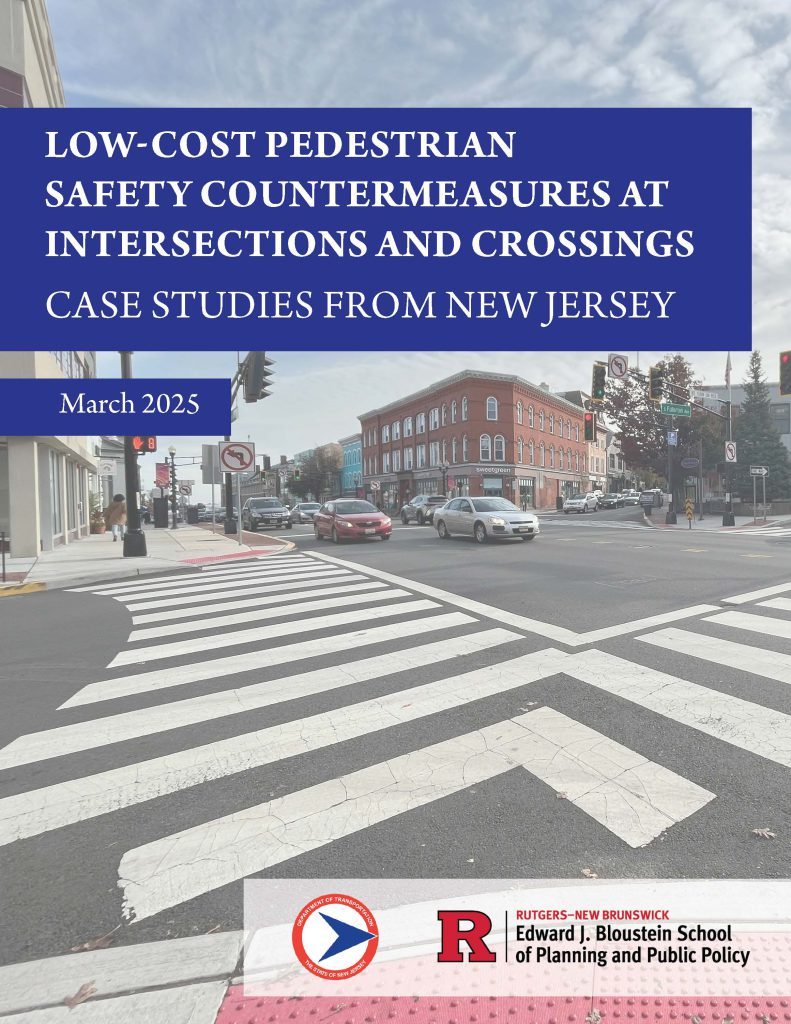The NJDOT Bicycle and Pedestrian Resource Center has recently released Low-Cost Pedestrian Safety Countermeasures at Intersections and Crossings: Case Studies from New Jersey. The report highlights real-world examples of cost-effective pedestrian safety improvements implemented in New Jersey. According to the 2020 New Jersey Strategic Highway Safety Plan, 30% of all serious injuries and fatalities in the State occur at intersections. While a range of safety countermeasures can be deployed to address this issue, low-cost improvements in particular offer communities the ability to increase safety for vulnerable road users without the need for expensive engineering studies or infrastructure investments.
This new report explores three case studies of pedestrian safety countermeasures implemented at intersections in New Jersey: Grand and Grove Streets in Jersey City, Washington and Barell Avenues in Carlstadt, and Bloomfield and Fullerton Avenues in Montclair. The examples include a variety of low-cost improvements, including painted curb extensions, bollards, and ergonomically-designed crosswalks. For each case study location, the report explores roadway and intersection characteristics, details on the countermeasures implemented, traffic volume and observed activity, and crash data.
The report identifies key findings related to data analysis and tools, successful approaches to local implementation, and understanding site-specific context and the role of the human experience in countermeasure design and implementation. The information provided is intended to guide communities in New Jersey and beyond in their efforts to improve safety for vulnerable road users at intersections and crossings.
The full report can be accessed here.

